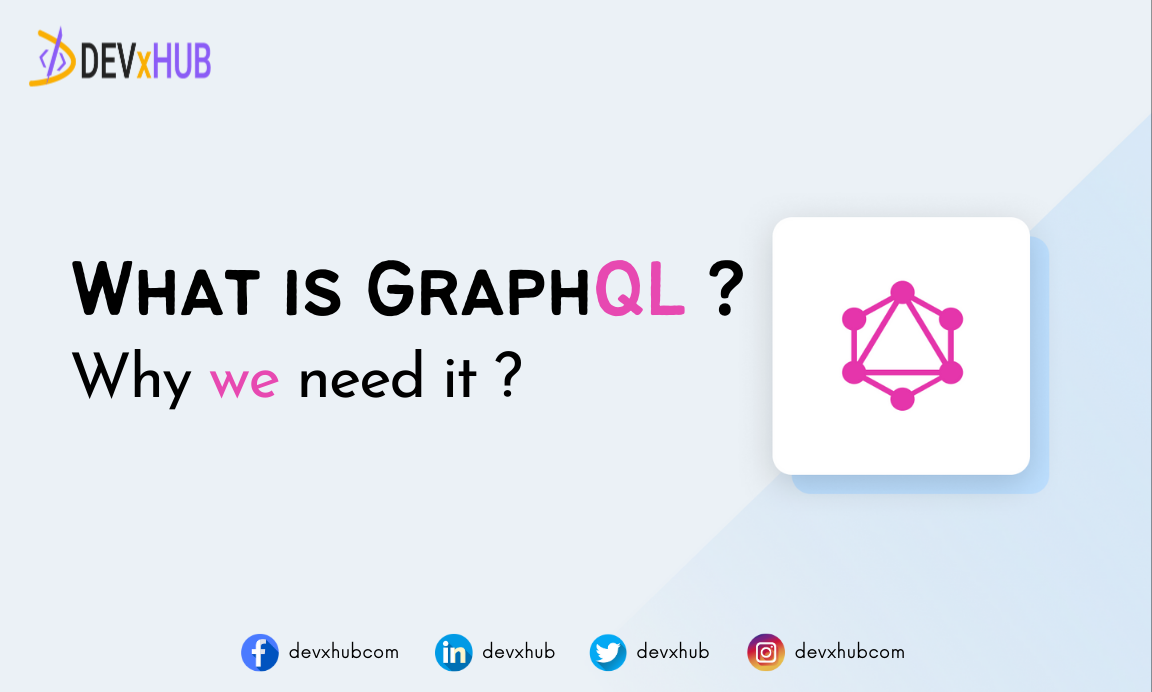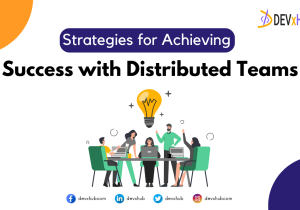Blog - Exploring GraphQL: A Catalyst for Robust Application Development
Description Delve into the realm of GraphQL and discover why it is becoming the go-to choice for developers in both large and small-scale application projects. Understand “What is GraphQL? Why we need it in Large/Small Applications/Software?” to harness its potential for your software development journey.
Introduction to GraphQL
The digital world continually evolves, and with it, the tools and technologies that drive its expansion. One such technology is GraphQL, a query language for APIs that has been making waves in the developer community. Invented by Facebook in 2012 and released as an open-source project in 2015, GraphQL provides a more efficient, powerful, and flexible alternative to the traditional REST API.
Introduction to API Technologies
API (Application Programming Interface) technologies act as the bridge between different software systems, allowing them to communicate with each other. They have become the backbone of modern software development, enabling the creation of complex, feature-rich applications. However, as applications grow in complexity, the need for more efficient data retrieval and manipulation becomes paramount. This is where GraphQL comes into the picture, offering a new paradigm for querying and manipulating data.
Evolution from REST to GraphQL
The journey from REST (Representational State Transfer) to GraphQL is a testament to the evolving needs of developers and applications. REST has been the dominant API design model for a long time, but its limitations, such as over-fetching and under-fetching of data, have led to the search for better alternatives. GraphQL addresses these issues head-on, providing a more efficient and powerful solution for modern application development.
Core Concepts of GraphQL
At its heart, GraphQL operates based on a few core concepts that set it apart from REST and other API technologies. Understanding these concepts is crucial for developers looking to harness the power of GraphQL in their projects.
Schema Definition Language (SDL)
GraphQL utilizes Schema Definition Language (SDL) to define the types and relationships between types in your data. This schema serves as the contract between the client and the server, ensuring that the data exchanged adheres to a predefined structure.
Resolvers and Query Execution
Resolvers in GraphQL are functions that resolve the data for a particular type. They play a crucial role in query execution, fetching the required data from the database or other sources and returning it in the specified format.
Mutation and Data Manipulation
Mutation is the process of modifying data in GraphQL. It allows developers to create, update, and delete data, providing a clear and structured way to manipulate data in the backend.
Advantages of GraphQL
GraphQL comes with a host of benefits that make it a superior choice for modern application development, especially when compared to REST.
Efficiency and Performance
One of the significant advantages of GraphQL is its efficiency in data retrieval. Unlike REST, which requires multiple requests to fetch related data, GraphQL allows developers to request exactly the data they need, reducing the amount of data transferred over the network.
Real-time Updates with Subscriptions
GraphQL supports real-time updates through subscriptions, allowing developers to create interactive and dynamic user interfaces that reflect changes in real-time.
Strong Typing and Schema Validation
The strong typing and schema validation features of GraphQL ensure that the data exchanged between the client and the server adheres to a predefined structure, reducing the likelihood of errors.
Why GraphQL in Large Applications
Large applications demand robust, scalable, and efficient solutions to handle the complexity and volume of data they manage. GraphQL rises to the occasion with features that address the unique challenges posed by large-scale applications.
Scalability and Performance Optimization
GraphQL’s design promotes scalability and performance optimization, making it a suitable choice for large applications that require efficient data handling and retrieval.
Microservices Architecture Integration
The ability to seamlessly integrate with microservices architecture is another reason why GraphQL shines in large applications. It provides a unified API layer over various microservices, promoting a clean and organized codebase.
Enhanced Developer Experience
GraphQL offers an enhanced developer experience by providing powerful tools and libraries that simplify the development process, boost productivity, and foster a collaborative environment.
Why GraphQL in Small Applications
Small applications, too, can benefit immensely from the features and advantages offered by GraphQL. Its ability to streamline data retrieval and manipulation makes it a favorable choice for small-scale projects.
Rapid Prototyping and Development
GraphQL facilitates rapid prototyping and development by providing a flexible and intuitive querying language. This, in turn, accelerates the development cycle and helps bring products to market faster.
Lower Costs for Data Retrieval and Management
By reducing the amount of data transferred over the network, GraphQL helps lower the costs associated with data retrieval and management, which is particularly beneficial for small applications operating on a tight budget.
Comparison with REST
The comparison between REST and GraphQL is inevitable, given their shared domain of API technologies. However, they differ significantly in how they handle data retrieval and manipulation, with GraphQL emerging as a more efficient and flexible solution.
Data Fetching Efficiency
One of the primary advantages of GraphQL over REST is its ability to retrieve all the required data in a single request. This efficiency in data fetching significantly reduces the load on the network, making applications faster and more responsive.
Over-fetching and Under-fetching Problems with REST
REST often encounters problems like over-fetching (retrieving more data than needed) and under-fetching (retrieving insufficient data) of information. These issues necessitate additional requests to the server, increasing the load and affecting performance. On the other hand, GraphQL allows precise data retrieval, eliminating these problems.
Versioning and Backward Compatibility
REST APIs require versioning to handle changes in the schema, which can create compatibility issues with existing clients. GraphQL, however, enables deprecation and addition of new fields without affecting existing queries, offering a smoother transition and ensuring backward compatibility.
Implementing GraphQL
Setting Up a GraphQL Server
Implementing GraphQL begins with setting up a server that can handle GraphQL queries. Various server libraries are available for different programming languages, which makes setting up a GraphQL server relatively straightforward.
Defining Schemas and Resolvers
Once the server is up, the next step is defining the schema using SDL and implementing resolvers for query execution. A well-defined schema and efficient resolvers are crucial for the successful implementation of GraphQL.
Client-side Implementation
On the client-side, developers can use libraries like Apollo Client or Relay to interact with the GraphQL server. These libraries provide a host of features that simplify querying and manipulating data.
Real-world Use Cases of GraphQL
Social Media Platforms
Many social media platforms have adopted GraphQL to manage the complex data relationships inherent in social interactions. It allows for efficient data retrieval, improving the performance and user experience.
E-commerce Applications
E-commerce applications benefit from GraphQL’s ability to query multiple resources in a single request, which is crucial for displaying product information, user reviews, and other related data efficiently.
Content Management Systems
GraphQL can be a game-changer for Content Management Systems (CMS) by providing a more flexible and efficient way to manage and retrieve content.
GraphQL Community and Ecosystem
**Popular Libraries and Frameworks**
The GraphQL community has spawned a variety of libraries and frameworks that simplify working with GraphQL, such as Apollo, Relay, and Prisma. These tools accelerate development and promote best practices in GraphQL implementation.
Community Contributions and Support
With a growing community, GraphQL benefits from a wide range of contributions and support. Developers share their experiences, solutions, and best practices, fostering a collaborative environment that helps push GraphQL forward.
Future of GraphQL
New Features and Specifications
The GraphQL community continually works on new features and specifications to address the evolving needs of developers. Enhanced support for real-time updates, better error handling, and improved tooling are among the areas of active development.
Adoption Trends
The adoption of GraphQL is on the rise as more organizations recognize its benefits. The trend is likely to continue as GraphQL proves its worth in real-world applications.
Common Concerns and Solutions
Security Measures for GraphQL
Security is a paramount concern in GraphQL implementations. Employing measures like rate limiting, query whitelisting, and validating queries against the schema can help mitigate security risks.
Error Handling and Debugging
Error handling and debugging are crucial for maintaining a robust GraphQL implementation. Tools and practices like logging, monitoring, and tracing can help developers identify and fix issues promptly.
What is GraphQL? Why we need it in Large/Small Applications/Software?
Summarizing Key Takeaways
GraphQL provides a robust framework for querying and manipulating data, offering significant advantages over REST, especially in terms of efficiency, flexibility, and developer experience. Its adoption in both large and small-scale applications underscores its potential to handle a wide range of development needs.
FAQ
How does GraphQL handle caching?
GraphQL does not have built-in caching; however, caching can be implemented at the client-side or the server-side using tools and practices specific to the application’s needs.
Is GraphQL a database technology?
No, GraphQL is not a database technology. It is a query language for APIs that provides a more efficient way to query and manipulate data.
How does error handling work in GraphQL?
Error handling in GraphQL is typically done through the errors field in the response, which contains information about any errors that occurred during the query execution.
What is the learning curve for GraphQL?
The learning curve for GraphQL can vary depending on one’s familiarity with API technologies. However, with a well-structured learning path and community support, developers can quickly get up to speed.
Can GraphQL coexist with other API technologies?
Yes, GraphQL can coexist with other API technologies like REST and SOAP, allowing developers to leverage the strengths of each technology as needed.
How to optimize performance in GraphQL implementations?
Performance optimization in GraphQL can be achieved through various means, including efficient schema design, optimizing resolvers, employing caching, and utilizing performance monitoring tools.
Conclusion,
Reflecting on GraphQL’s Impact on Software Development
Exploring the myriad facets of GraphQL unveils its potential as a catalyst for robust application development. Its unique features, coupled with a growing community and a rich ecosystem of tools, make GraphQL a compelling choice for developers. By understanding “What is GraphQL? Why we need it in Large/Small Applications/Software?” developers can harness the potential of GraphQL to create more efficient, scalable, and user-friendly applications.
Related Posts
Categories
- App Development (2)
- Design (2)
- DEVxHUB (30)
- Digital Marketing (2)
- Guide (24)
- It Bangladesh (1)
- Logo design (1)
- Operating system (1)
- Personal Improvement (14)
- Planning (4)
- Project management (3)
- Social media (2)
- Software Development (5)
- Software Quality Assurance (8)
- Startups (1)
- Team work (1)
- UI UX (1)
- Web Development (6)
Main Tags
- 2024
- Android
- app development
- bangladesh
- content writing
- design
- devxhub
- Digital marketing
- Guide
- IOS
- It
- logo design
- Operating system
- Personal Improvement
- planning
- project management
- social media
- Software Development
- Software Quality Assurance
- software testing
- software testing types
- Startups
- Success
- team
- UI UX
- UI UX design
- VR
- Web Development















